What to Know About Identifying and Treating Your Dog's Anxiety
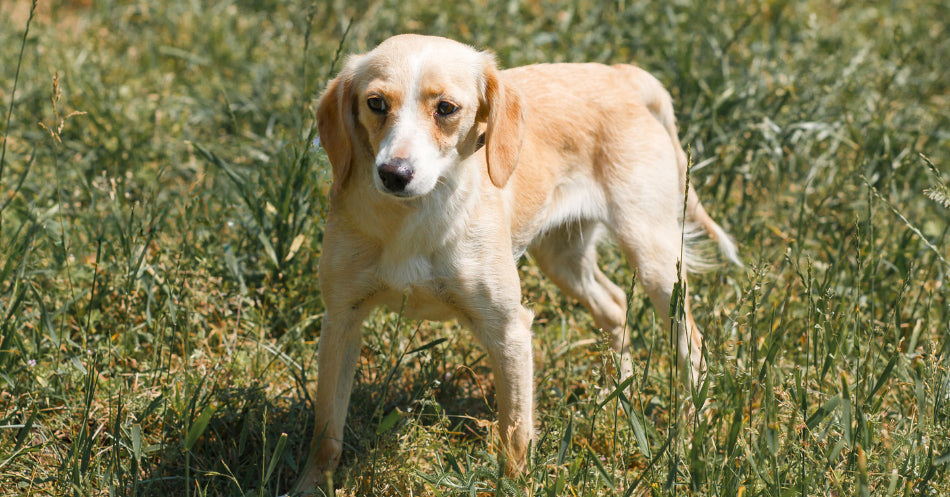
More than 50% of dogs in the United States suffer from fear, anxiety, or stress. The causes range from loud noises to separation anxiety to routine changes and more. But how can you tell if your dog has anxiety? And what can you do to help them?
11 Common Dog Anxiety Symptoms
If our dogs could talk and tell us how they were feeling, it would make things so much easier. But, since, they can’t, we need to put on our detective hats and look for the clues that our dog is suffering from anxiety.
When you’re reading this list of possible symptoms, remember that it’s unlikely an anxious dog will show all of them. They could show three or four signs altogether for every source of anxiety, or they might show one sign for separation anxiety and another when they hear a clap of thunder.
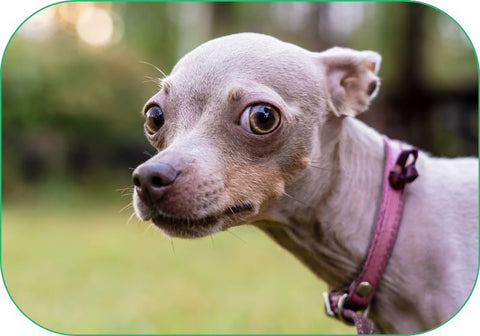
The most important thing is to know your dog and their normal behavior. That way, you’ll know when something is out of the ordinary and a possible sign of anxiety. Of course, any time you see your dog suddenly acting abnormally contact your veterinarian to rule out any medical issues or causes first.
1. Clinging
A clingy dog doesn’t like to leave your side. While having your pup follow you around the house could just be a sign of affection, a clingy dog who becomes distressed when you leave them behind could be suffering from separation anxiety.
2. Panting
Pretty much all dogs will pant after exercise or on a hot summer day. But when your dog starts panting for no apparent reason, it may be caused by stress. Think of how a person may start to hyperventilate when they’re panicking, and you can see how panting can be a sign of dog anxiety.
3. Shaking and Trembling
You may have seen dogs (especially small dogs) trembling or “shaking like a leaf.” This could be because they’re cold and shivering, but you can’t rule out anxiety or fear.
As always, know what’s normal for your dog. If your dog normally doesn’t get overly cold, or if you notice your dog shaking when the temperature hasn’t changed, it’s time to look into anxiety as the cause.
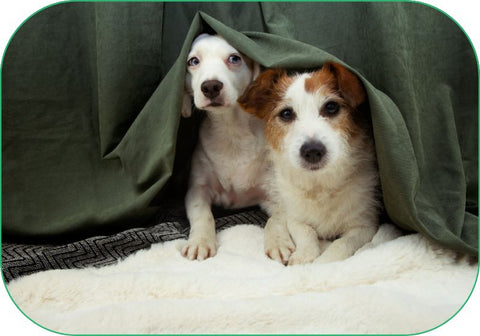
4. Hiding
A dog that hides or slinks along the edge of a room is a dog that’s trying to feel safe. Sometimes dogs look for that safety when they’re sick or in pain. At other times it’s because they’re fearful or anxious. In either case, your dog will need your help to recover.
5. Cowering and Tucking in Their Tail
Dogs will often cower and tuck their tail down between their legs temporarily to show submission, but holding that posture for longer periods of time is often a sign of fear and anxiety.
6. Drooling
For some dogs, drooling is a way of life. For others, it’s abnormal and should be considered a sign that something’s wrong. Anxious dogs will often drool and pant when frightened.
7. Restlessness
Is your normally calm pup pacing the halls and just can’t sit still or relax? Dog anxiety could be to blame.
8. Destructive or Aggressive Behavior
This isn’t referring to the “normal” destructive dog tendencies like a teething puppy chewing on your shoes. This is when your normally well-behaved dog rips your shoes to shreds when you leave them alone or snaps at you during a thunderstorm.
While some illnesses and injuries can lead a dog to act out their physical pain or discomfort, mental pain and discomfort can also be the reason behind their destructive behavior.
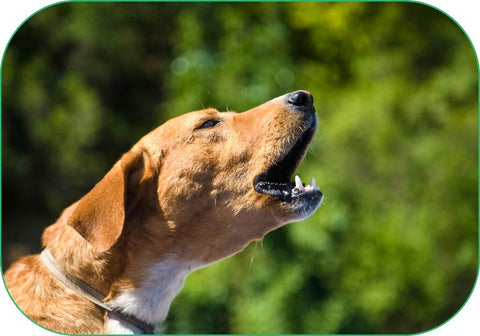
9. Barking
Again, many dogs will bark at strange people, animals, or things. You want to be on the lookout for barking that goes beyond normal. For example, when you hear your dog barking frantically every time you leave the house.
10. Inappropriate Elimination
If your housetrained dog suddenly starts pooing or peeing indoors, definitely start by contacting your veterinarian and eliminating possible emergencies like UTIs, blockages, etc. After you have the medical all-clear, look into anxiety or stress as the possible cause.
11. Compulsive Behavior
Compulsive behaviors are when your dog repeats a behavior over and over again for no apparent reason. This could include licking the same spot on their paw for hours or running in circles.
Left untreated, some compulsive behaviors can cause physical harm to your dog. For example, one pet parent, Alyssa, said her dog's compulsive licking eventually created open wounds on her legs.
Pin Me!

The 4 Most Common Reasons for Dog Anxiety
Every dog is different, so the exact cause of each dog’s anxiety will vary. That being said, most dog’s fears fall into one of only a few categories.
1. New Pets or People
Getting a new pet or a new family member is definitely exciting. It also brings changes such as new sights, sounds, daily schedules, and more. And, for a routine-loving animal like a dog, that can be a scary thing.
Always keep a watchful eye on your dog for signs of anxiety during these kinds of family transitions.

2. Separation
If your dog looks a little sad when you leave the house to go to work for the day, that may not be anything to worry about. However, if they start regularly showing any of the anxiety signs above when you’re out of their sight, separation anxiety could be to blame.
Separation anxiety in dogs can be especially stressful for their human families, as their pet parents may start planning their entire lives around whether or not they can leave their dog alone for any length of time.
3. Noise
Loud noise is a huge cause of dog anxiety. This includes everything from construction noise to fireworks to thunder to sirens and more.
Unlike some of the other anxiety sources in this list, loud noises are often unexpected, making them scarier for our dogs – and that much harder for us to anticipate.

4. Travel
While many dogs love a long ride in the car, for others it’s a source of fear, stress, and anxiety. One bad experience in a car can sometimes change a dog’s opinion of them for life. And a long car trip with an anxious dog can be incredibly stressful for everyone involved.
What to Do When Your Dog Has Anxiety
1. Talk to Your Veterinarian
If you suspect your dog suffers from fear, stress, or anxiety, talk to your veterinarian. They will eliminate any medical reasons behind your dog’s behavior and help you develop a treatment plan.
Depending on the degree of your dog’s symptoms, they may recommend things like behavioral training, changes in your dog’s environment, supportive supplements, or prescription medication.

2. Identify the Source of the Anxiety
You can’t help your dog with their anxiety triggers if you don’t know what they are. Once you’ve identified the source of their fear, you can start to help them.
For example, a dog with separation anxiety may need a safe, quiet place in the house to stay in while you’re away – like a dog bed in an isolated corner or an anxiety-reducing crate.
These crates have smaller windows and openings than regular crates and are specifically designed to make a dog feel more hidden and safe.
For a dog with noise anxiety, their pet parent might put a snugly fitting shirt or wrap on their dog when they know a storm is coming.

3. Consider a Veterinary Behaviorist
Board-Certified Veterinary Behaviorists have specialized training to help you with your dog’s behavioral issues and problems. They can be a great resource for you to help your dog with their anxiety.
4. Support Their Health With the Proper Supplements
A healthy nervous system needs proper nutritional support to function well. Vitamins like B6 and B12, which you can find in naturally-sourced dog supplements, are critical for a healthy nervous system.
Fear and anxiety can also mess with your dog’s digestive system as well as their overall mood. Probiotics, like acidophilus, promote gut health and are known to contribute to mood, and natural ingredients like peppermint leaf powder soothe digestive discomfort and nausea. Balanced Breed® Canine Probiotic & Odor Control contains both ingredients to provide your anxious dog’s digestive system soothing support.
FAQ
-
Can you give a dog Benadryl for anxiety?
Always discuss giving human medications with your veterinarian first. As a drug, Benadryl is usually considered safe for dogs for allergic reactions when given under a veterinarian’s care, but it is not often recommended for anxiety. That is because it makes some dogs hyperactive instead of drowsy.
-
Can dogs have anxiety attacks?
Yes. While the signs differ from those in humans, dogs can experience episodes of extreme anxiety similar to panic or anxiety attacks in humans. Look for symptoms like drooling, panting, restlessness, inappropriate elimination, pacing, trembling, and hiding.
As with any sudden new symptoms in your dog, speak with your veterinarian to eliminate any medical reasons behind your dog’s actions.
-
Can dogs die from anxiety attacks?
There is no evidence that an anxiety attack by itself can kill your dog. However, the actions your dog takes during their anxiety attack could harm them. For example, if they tried to escape from a loud noise and ran into a busy street.
Also, constant feelings of stress and anxiety can be very harmful to your dog’s health over time. You can prevent this by identifying the cause of your dog’s stress, taking steps to eliminate that cause, providing your dog with positive ways to cope with it, and supporting their overall health with well-rounded natural dog supplements.
The Tail End
It can be scary to see our dogs experiencing severe stress or anxiety, but there is hope. By following your veterinarian's advice, finding the source of the stress, providing your dog with the support and training they need to deal with anxiety, and supporting their overall health with vital nutrients and vitamins, you can help your dog live a happier, more anxiety-free life.
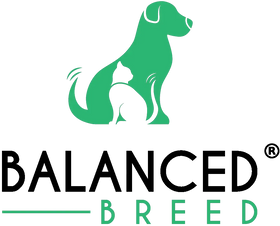


Leave a comment